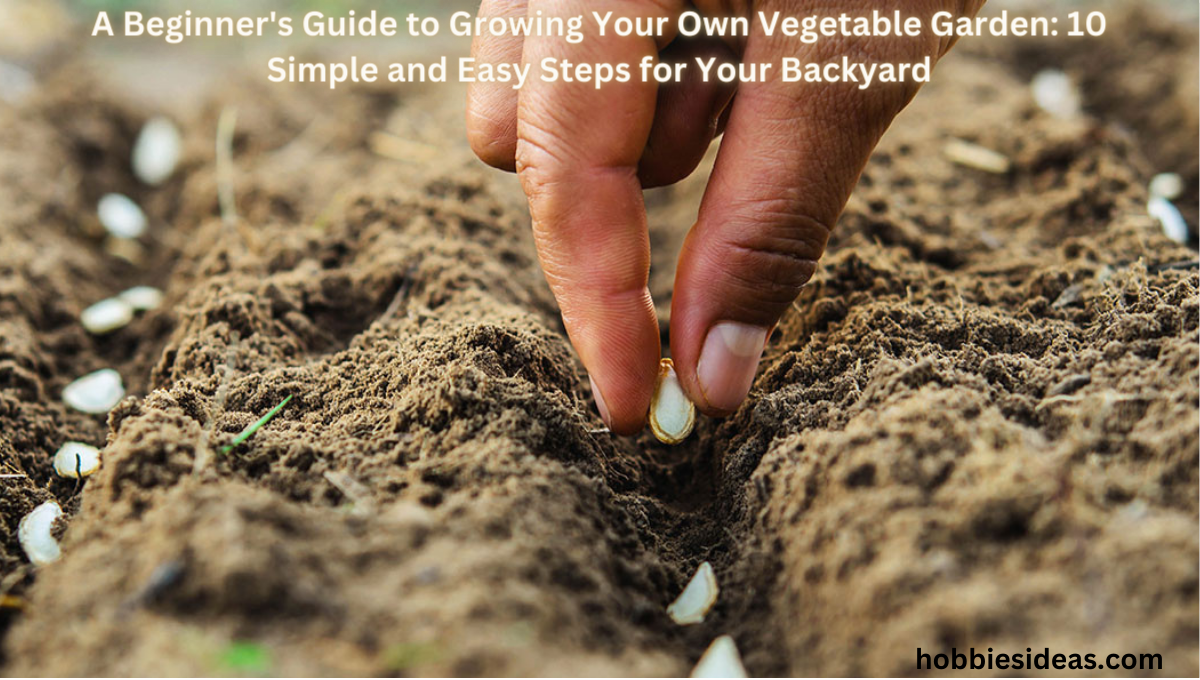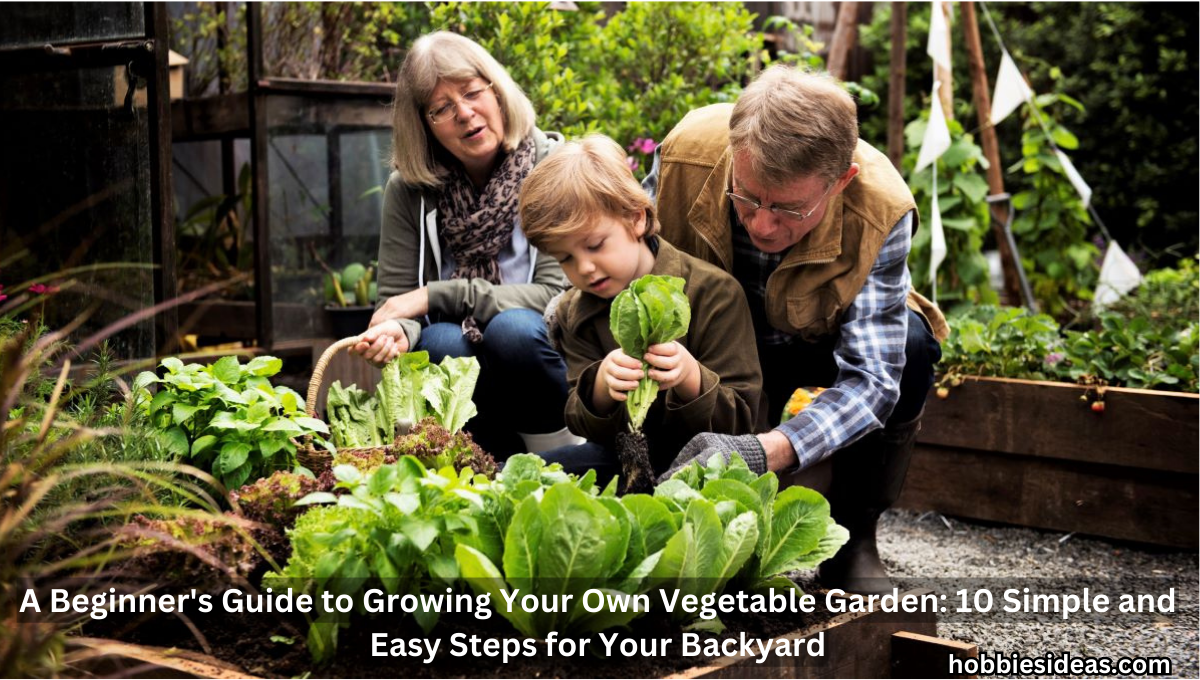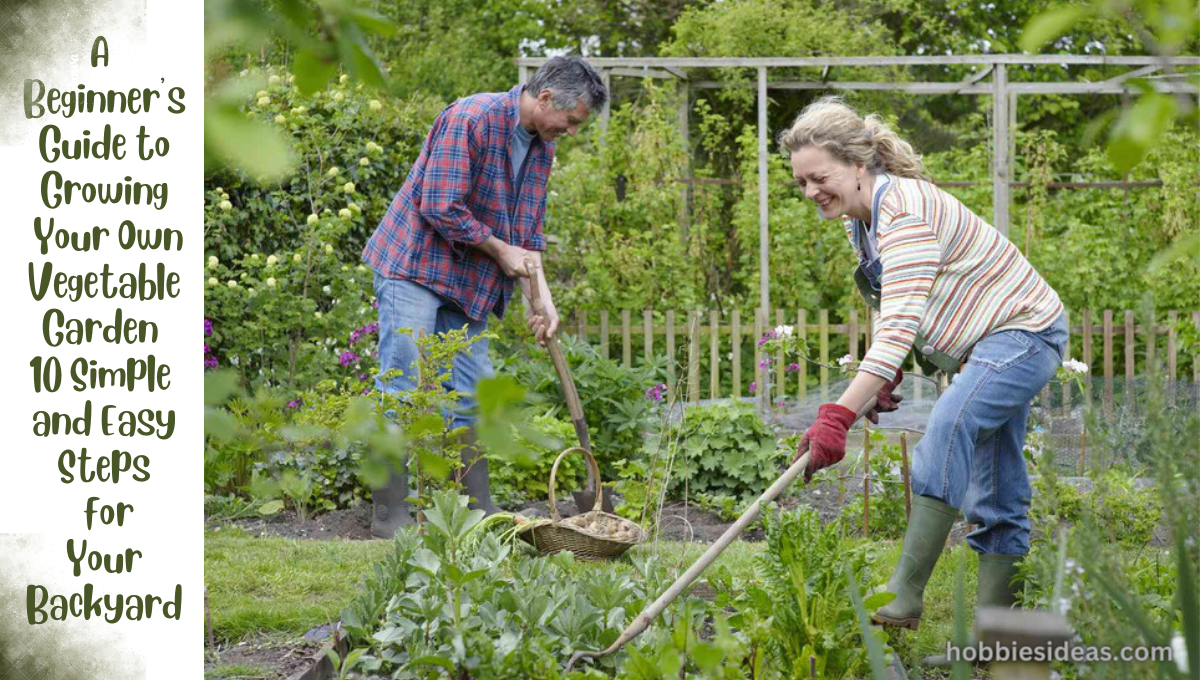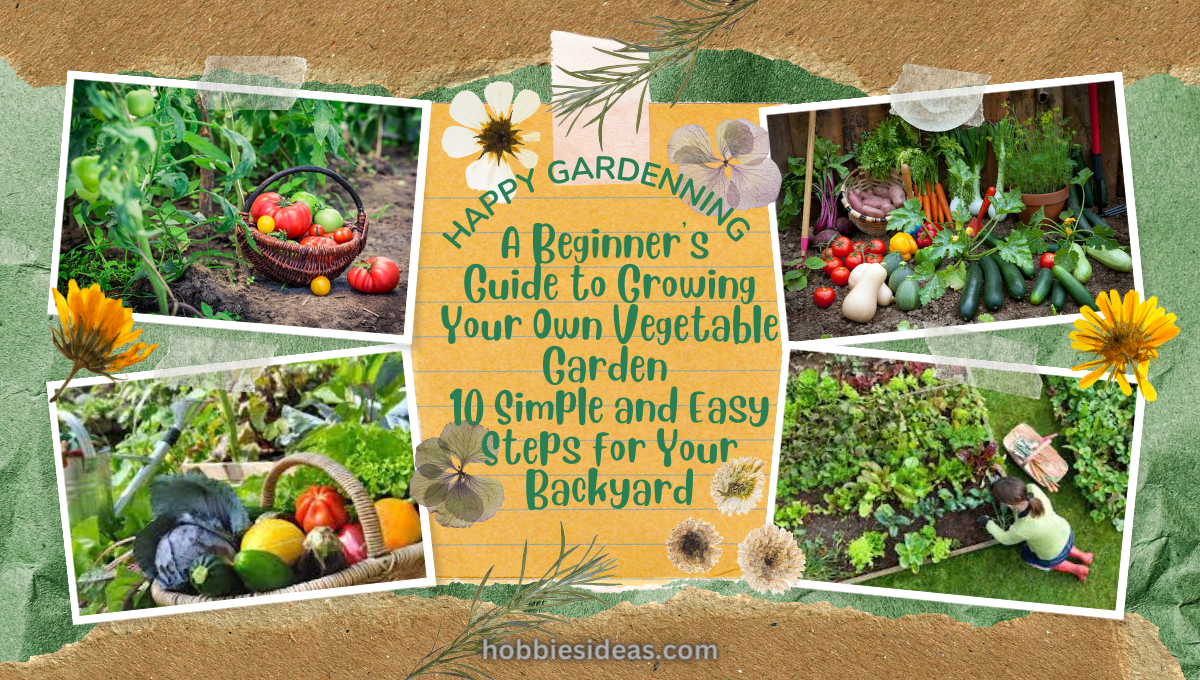Are you an experienced gardener ready to dig into the satisfying world of container gardening and growing your own veggies? Whether you have a spacious backyard or just a small patio, starting a vegetable garden is easier than you might think. Not only does it provide fresh and nutritious produce at your fingertips, but it also offers numerous benefits for both your health and the environment. Plant supports can help ensure successful container gardening. So, are you ready to explore the world of gardening vs traditional methods?
Imagine the satisfaction of plucking ripe tomatoes from your vegetable container garden or savoring homegrown herbs in your favorite dishes. Creating beautiful and productive container gardens is not only a great way to reconnect with nature but also adds charm and value to your property. Consider companion planting and using plant supports to maximize the potential of your vegetable container gardening.
So, let’s roll up our sleeves and get started with tomato plants! Whether you’re itching for spring planting or considering fall crops, this guide will walk you through each inch of soil as we dive into the wonderful world of vegetable gardening in raised beds. From choosing the right seeds to nurturing your veggies, we’ve got you covered.
Testing and improving soil quality
Conducting a soil test is an essential step when starting a vegetable garden in your backyard. By understanding the composition and pH level of your soil, you can make informed decisions on how to improve it for optimal plant growth. This is especially important for companion planting and container gardening, as these methods require specific soil conditions. Additionally, using compost can greatly benefit container plants by providing essential nutrients.
To conduct a soil test for your garden, start by obtaining a testing kit from your local gardening center or cooperative extension office. These kits typically include instructions on collecting samples and sending them off to a lab for analysis. Once you receive the results, you’ll have valuable information about the nutrient levels, pH balance, and organic matter content of your soil, which can help you optimize your plant supports, compost, seeds, and container plants.
Based on the test results, you may find that your vegetable container gardening soil lacks certain nutrients necessary for healthy plant growth. In such cases, adding garden waste is an effective way to improve both fertility and structure. Garden waste can come in various forms such as compost or well-rotted manure. By incorporating these materials into the ground garden, you enhance its ability to retain moisture and nutrients while promoting beneficial microbial activity for your container plants.
In addition to adjusting the pH level of your ground garden soil, which is crucial for specific veggies that thrive in different pH ranges, it’s important to add organic matter. Some plants prefer acidic conditions, while others thrive in alkaline environments. For instance, blueberries, a favorite of container gardening enthusiasts, love acidic soils with pH levels between 4 and 5.5. On the other hand, asparagus, another popular choice for garden planners, prefers slightly alkaline soils with pH levels around 7-8.
If you discover that your soil’s pH needs adjustment in your patio vegetable garden, there are several methods you can employ depending on whether it needs to be raised or lowered. To increase acidity (lower pH), incorporate elemental sulfur into the ground according to package instructions. On the other hand, if you need to raise the pH (reduce acidity), add agricultural lime or wood ash to your pots.
Understanding the importance of nutrient-rich soil in ground gardens, pots, and patio vegetable gardens cannot be overstated. Nutrients like nitrogen (N), phosphorus (P), and potassium (K) are essential for plant growth and development in container gardening. Nitrogen promotes leafy growth, phosphorus aids in root development, and potassium helps with overall plant health and disease resistance.

To ensure your container gardening plants receive the necessary nutrients, consider using organic fertilizers or slow-release granular fertilizers specifically formulated for vegetables in pots. These options provide a steady supply of nutrients over time, preventing nutrient deficiencies and promoting vigorous growth in your ground garden.
Selecting the perfect containers or in-ground beds
One of the first decisions you need to make is whether to plant in containers or in-ground beds for your patio vegetable garden. Both options, pots and in-ground beds, have their advantages and considerations, so let’s explore them further. Feel free to reply with any questions or comments.
Exploring different container options
Container gardening offers flexibility and convenience, especially for those with limited space. Here are some patio container options you can consider for your pots.
- Pots: Traditional clay or ceramic pots are popular choices due to their aesthetic appeal. They come in various sizes and shapes, allowing you to grow different types of vegetables.
- Raised beds: Raised beds provide a dedicated space for your vegetable garden while minimizing strain on your back. You can construct raised beds using materials like wood or composite boards.
- Grow bags: These lightweight fabric bags offer excellent drainage and portability. They are particularly suitable for small spaces or renters who may need to move their garden frequently.
Considering factors when choosing containers
Before selecting the pots for your patio vegetable garden, keep these factors in mind.
- Size: Ensure that the container is large enough to accommodate the root system of your chosen vegetables.
- Drainage: Containers must have adequate drainage holes at the bottom to prevent waterlogging.
- Material: Consider the material of your containers based on durability, insulation properties, and aesthetics.
Preparing in-ground beds
If you prefer planting directly into the ground, preparing suitable garden beds is essential. However, if you prefer a more versatile option, consider using pots or containers for your patio gardening needs. Follow these steps to ensure successful planting in pots or containers.
- Remove weeds: Clear any existing weeds from the designated area where you plan to create your vegetable bed.
- Loosen soil: Use a shovel or tiller to loosen compacted soil, ensuring proper root development for your vegetables.
- Amend soil: Evaluate your soil quality and amend it if necessary by incorporating organic matter such as compost or aged manure.
Evaluating space availability and personal preferences
When deciding between container gardening and in-ground beds for your patio, consider the following factors.
- Space availability: Assess the area you have available for gardening. If your backyard is limited, containers may be a better option.
- Personal preferences: Think about what suits your lifestyle and gardening goals. Some people enjoy the convenience of container gardening, while others prefer the traditional approach of in-ground beds.
By carefully evaluating these factors, you can select suitable methods for starting your vegetable garden on your patio. Whether you opt for containers or in-ground beds on your patio, remember to provide adequate sunlight, water, and nutrients to ensure healthy plant growth on your patio.
So why wait? Grab some plastic pots or ceramic pots for your container garden, drill holes at the bottom for proper drainage, prepare your patio garden bed by removing weeds and amending the soil with organic matter, and get ready to enjoy a bountiful harvest! Don’t forget to top it off with some fish emulsion fertilizer for an added boost.
Designing and planning your garden layout
Assessing available sunlight to determine optimal placement of plants
One of the key factors in designing a successful vegetable garden is assessing the amount of sunlight that reaches different areas of your backyard, patio, and container. Most vegetables require at least six hours of direct sunlight per day to thrive. Take some time to observe the sun’s movement throughout the day and identify areas with maximum exposure, including your patio and container. This will help you determine where to place your plants for optimal growth.
Creating a sketch or blueprint is essential when planning your garden layout, especially if you have a patio or are using containers.
Before you start digging and planting in your backyard container garden, it’s essential to have a clear plan in mind. Grab a pen and paper or use a digital garden planner tool to create a sketch or blueprint of your desired garden layout. Consider the available space in your backyard container, including any existing structures like patios or trees that may impact plant placement. Visualizing your design will help you make better decisions about pathways, and other container garden features.

Grouping plants based on their compatibility and growth requirements
To maximize efficiency and ensure healthy plant growth, it’s important to group vegetables with similar needs together in a container. Some plants require more water than others, while some prefer partial shade over full sun exposure. By grouping compatible plants together in a container, you can easily manage their watering, fertilization, and overall care requirements. For example, placing vegetables with similar needs in a container allows for efficient management of their care.
- Group tall plants such as tomatoes or corn together in your patio vegetable garden so they don’t overshadow smaller container varieties.
- Place moisture-loving vegetables like lettuce or spinach closer to each other in a container for easier irrigation.
- Consider companion planting by placing mutually beneficial crops next to each other in your patio vegetable garden. For example, you can plant basil near tomatoes in containers.
Incorporating pathways for easy access and maintenance
While designing your garden layout, don’t forget about practicality! Incorporating pathways between vegetable beds is essential for easy access during planting, harvesting, and maintenance tasks. A well-designed pathway system allows you to navigate through your garden without stepping on delicate plants or compacting the soil. Consider using materials like gravel, mulch, or stepping stones to create defined pathways that also add aesthetic appeal to your container garden.
By following these steps and taking the time to design and plan your vegetable garden layout, you’ll set yourself up for success right from the start. Assessing sunlight exposure, creating a sketch or blueprint, grouping plants based on compatibility, incorporating pathways, and utilizing containers will ensure an organized and thriving garden. So grab your gardening tools and get ready to transform your backyard into a bountiful vegetable paradise!
Choosing the ideal location for your vegetable garden
Choosing the right location for your patio vegetable garden is crucial. The success of your container plants depends on factors such as good drainage, adequate sunlight, protection from strong winds, and accessibility for regular care and harvesting.
Identifying areas with good drainage, adequate sunlight, and protection from strong winds
To ensure healthy growth in your patio vegetable garden, it’s important to find a location with good drainage. Avoid areas that tend to accumulate water or become waterlogged after rain. Look for spots in your backyard where the soil is well-draining and doesn’t retain excessive moisture. Container gardening is a great option for creating a patio vegetable garden.
Adequate sunlight is another key consideration for container gardening. Most vegetables require at least 6-8 hours of direct sunlight daily to thrive in a container. Observe different areas of your backyard throughout the day to identify spots that receive ample sunshine for container gardening. Keep in mind that some leafy greens can tolerate partial shade in a container, but most crops prefer full sun exposure for container gardening.
Protection from strong winds is essential to prevent damage to your plants in containers. Strong gusts can break fragile stems and uproot young seedlings in containers. Consider locating your container vegetable garden near structures like fences or buildings that act as windbreaks for containers. Alternatively, you can create wind barriers using trellises or tall plants strategically placed around the container garden perimeter.
Considering proximity to water sources for convenient watering
Watering plays a vital role in maintaining a healthy vegetable container garden. Therefore, it’s wise to choose a location close to a water source for easy access when irrigating your plants in containers. This could be an outdoor faucet or a nearby hose connection.

Having a water container conveniently available will save you time and effort while ensuring consistent hydration for your veggies during dry spells or hot summer days. Remember that vegetables generally require about 1 inch of water per week, so having an easy access container will facilitate regular watering routines.
Evaluating potential obstructions like trees or structures that may cast shadows
Take note of any potential obstructions, such as trees, buildings, or tall structures, that may cast shadows on your vegetable garden container. These obstructions can block sunlight and hinder plant growth. Evaluate the surroundings and choose a location for your container that is free from such obstructions.
If you have existing trees in your backyard, consider pruning them to allow more sunlight to reach your container garden. Avoid placing your vegetable beds too close to walls or fences that might create unwanted shade for your container plants during certain times of the day.
Prioritizing accessibility for regular care, harvesting, and enjoyment
Accessibility is often overlooked but crucial for a patio vegetable garden. You’ll want a location that allows easy access for regular care tasks like weeding, watering, and pest control in containers. It should also be convenient for harvesting fresh produce whenever you desire.
Consider the proximity of the container garden to your home’s entrance or kitchen. Having it closer will encourage frequent visits and make it easier to incorporate homegrown vegetables into your meals. If you plan on entertaining guests in your backyard, having the container vegetable garden in a central spot can add visual appeal and serve as a conversation starter.
Selecting and planting vegetables you enjoy eating
One of the most important factors to consider when selecting and planting vegetables in containers is choosing ones that you enjoy eating. After all, the goal of container gardening is to grow food that brings joy and nourishment to both body and mind. Here are some key points to keep in mind when choosing which vegetables to grow in containers.
Researching suitable vegetable varieties based on climate conditions
Before sowing seeds or purchasing seedlings, it’s crucial to research which vegetable varieties thrive in your specific container climate conditions. Certain plants may require more sunlight, water, or specific soil pH levels than others. For example, tomatoes are known for their love of warmth and sunshine, making them an ideal choice for areas with long summers and container gardening.
To ensure successful growth in container gardening, consult local gardening resources or speak with experienced gardeners in your area who can provide valuable insights into which varieties are best suited for your region’s climate.
Considering personal preferences regarding taste, appearance, or nutritional value
While it’s essential to consider the practical aspects of growing vegetables in containers, don’t forget about personal preferences! Think about the flavors you enjoy most and the visual appeal of different veggies. Some people find great joy in harvesting vibrant red tomatoes from their container while others may prefer the earthy taste of root vegetables like carrots.
Take into account the nutritional value of various vegetables, especially when considering container gardening. If you’re looking to incorporate more vitamins and minerals into your diet, opt for nutrient-dense options such as leafy greens like spinach or kale.
Planning crop rotation to maintain soil health
Crop rotation is a vital practice that helps maintain soil health by preventing nutrient depletion and reducing pest and disease buildup in container gardens. By rotating crops each year within different sections of your container garden space, you can break pest cycles while allowing the soil in the containers to replenish essential nutrients.

Consider dividing your garden into different sections or beds designated for specific plant families (e.g., nightshades like tomatoes and peppers, or brassicas like broccoli and cabbage) in containers. Rotate these families each year to ensure optimal container soil health and minimize the risk of pest infestations.
Timing plantings according to recommended growing seasons
To maximize your harvests in a container garden, it’s crucial to time your plantings according to recommended growing seasons. Different vegetables have specific requirements for temperature and daylight hours in containers. Some thrive in cooler spring or fall weather, while others prefer the heat of summer in containers.
Research the ideal planting times for the vegetable varieties you’ve chosen to grow in containers. This will help ensure that your container plants have enough time to grow, flower, and produce a bountiful harvest before adverse weather conditions set in.
Providing Adequate Watering and Optimal Growing Conditions
Providing adequate watering and optimal growing conditions is crucial for the success of your plants in your patio vegetable garden. Container gardening can help create the perfect environment for your plants.
Understanding Water Requirements Specific to Each Vegetable Variety
Different vegetables have varying water needs, so it’s essential to understand the specific requirements of each plant in your container garden. Some vegetables, like tomatoes and cucumbers, require more water compared to others such as carrots or radishes. By knowing the individual needs of your container crops, you can ensure they receive just the right amount of moisture.
Implementing Proper Watering Techniques
Proper watering techniques are essential for maintaining healthy vegetable plants, whether they are grown in containers or in the ground. Two popular methods for watering vegetable plants are deep watering and drip irrigation. Deep watering involves saturating the soil around the roots thoroughly, promoting the development of deep root systems that are better equipped to handle drought conditions. On the other hand, drip irrigation delivers water directly to the base of each plant through a system of tubes with small emitters, conserving water and ensuring that each plant in the container receives an adequate supply.
Monitoring Soil Moisture Levels
To prevent over or under-watering your vegetable garden in containers, it’s crucial to monitor container soil moisture levels regularly. Over-watering can lead to root rot and other fungal diseases in container plants, while under-watering can cause stunted growth or wilting. Use a moisture meter or simply stick your finger into the container soil up to your knuckle; if it feels dry at that depth, it’s time to water the container. Remember that different container soil types retain moisture differently, so adjust accordingly based on what works best for your container garden.
Providing Support Structures for Vining Plants
Certain vegetables like beans, peas, and tomatoes are vining plants that require support structures such as trellises or cages. These structures help the plants grow vertically in containers, saving space and allowing for better air circulation. By providing support, you not only maximize your container garden’s productivity but also make harvesting easier.
Fertilizing to Enhance Growth
In addition to water, vegetables in container gardens need a steady supply of nutrients to thrive. Fertilizing is essential for replenishing the soil with the necessary elements that promote healthy growth. Before planting, incorporate organic matter like compost or well-rotted manure into the container soil to enrich it naturally. Throughout the growing season, consider using organic fertilizers specifically formulated for vegetable gardens in containers to provide additional nutrients.
Creating an Ideal Growing Environment
Apart from watering and fertilizing, creating an ideal growing environment in a container involves considering factors such as sunlight exposure and temperature requirements. Most vegetables thrive in full sun, receiving at least six hours of direct sunlight per day. However, some leafy greens like lettuce can tolerate partial shade. Be aware of your region’s climate and plant accordingly; some vegetables prefer warm weather while others can withstand colder temperatures.
Maintenance and ongoing care for your vegetable garden
Maintaining a thriving vegetable garden in containers requires regular attention and care. By following these simple steps, you can ensure that your container plants stay healthy and productive throughout the growing season.

Regularly weeding to minimize competition for nutrients and space
Weeds are the bane of every gardener’s existence, but they can be particularly detrimental to a vegetable garden. These pesky invaders compete with your vegetable plants for essential nutrients, water, and sunlight. To keep them under control:
- Regularly inspect your garden: Take some time each week to walk through your garden beds and identify any new weed growth.
- Pull weeds by hand: Gently grasp the base of the weed near the soil line and pull it out, ensuring you remove the entire root system.
- Mulch your beds: Apply a layer of organic mulch around your plants to suppress weed growth. This will also help conserve moisture in the soil and regulate temperature.
Applying organic mulch to suppress weeds, conserve moisture, and regulate temperature
Mulching is an essential practice that offers numerous benefits to your vegetable garden. By applying organic mulch such as straw or wood chips:
- Weed suppression: A thick layer of mulch acts as a barrier, preventing weed seeds from germinating and competing with your vegetables.
- Moisture conservation: Mulch helps retain soil moisture by reducing evaporation. This means less frequent watering is required.
- Temperature regulation: Mulch acts as insulation, protecting plant roots from extreme temperatures during hot summers or cold winters.
Monitoring for pests and diseases, implementing appropriate control measures
Pests and diseases can wreak havoc on your vegetable plants if left unchecked. Regular monitoring is crucial in identifying issues early on so that you can take appropriate action:
- Inspect regularly: Take time to closely examine both sides of leaves, stems, and fruits for signs of pests or diseases.
- Implement organic pest control: Use natural methods like introducing beneficial insects, such as ladybugs or praying mantises, to control pests. You can also make homemade insecticidal soap to deter unwanted visitors.
- Practice crop rotation: Rotate your vegetable crops each year to minimize the risk of disease buildup in the soil.
Pruning and staking plants to promote healthy growth
Proper pruning and staking techniques help maintain plant health, improve air circulation, and maximize sunlight exposure:
- Prune for productivity: Regularly remove dead or diseased branches from your vegetable plants. This will redirect energy towards producing healthier fruits and vegetables.
- Provide support: Install stakes or cages for taller plants like tomato plants. This prevents them from sprawling on the ground, reducing the risk of diseases and making harvesting easier.
By following these maintenance practices, you can ensure a successful vegetable garden that yields abundant harvests. Remember to tailor your care routine based on your specific needs and consult experienced gardeners at local nurseries or garden centers for additional guidance.
Conclusion
In conclusion, successful vegetable gardening requires careful attention to several key factors. Testing and improving soil quality is essential to ensure your plants have the nutrients they need to thrive. Whether you choose containers or in-ground beds, selecting the perfect option for your garden will contribute to its overall success.
Designing and planning your garden layout allows you to optimize space and make the most of your backyard. Choosing an ideal location that receives adequate sunlight is crucial for healthy plant growth.
Selecting vegetables that you enjoy eating will not only bring satisfaction but also increase motivation in caring for your garden. Providing sufficient watering and creating optimal growing conditions are essential for the well-being of your plants.
Maintenance and ongoing care play a vital role in ensuring a bountiful harvest. Regular weeding, monitoring pests, and providing necessary support are tasks that should not be overlooked.
To further enhance your vegetable gardening experience, here are some tips:
- Companion planting: Consider planting compatible vegetables together to maximize space and deter pests.
- Mulching: Apply a layer of organic mulch around your plants to retain moisture, suppress weeds, and regulate soil temperature.
- Crop rotation: Rotate the types of vegetables planted each season to minimize disease buildup in the soil.
- Integrated pest management: Use natural methods such as handpicking insects or introducing beneficial predators instead of relying solely on pesticides.
- Continuous learning: Stay curious about new techniques, varieties, and gardening practices by reading books or joining online communities.
By following these tips and tricks, you can create a thriving vegetable garden right in your own backyard!
FAQs
Can I start a vegetable garden without testing my soil?
Yes, while testing soil quality is recommended for optimal results, it is possible to start a vegetable garden without it. However, keep in mind that certain plants may require specific nutrient levels or pH conditions for healthy growth.
What are the advantages of using containers for a vegetable garden?
Using containers offers flexibility in terms of placement and mobility. It allows you to control soil quality, provides better drainage, and minimizes the risk of weeds or pests from infiltrating your garden.
How can I plan an efficient garden layout?
Consider factors such as sunlight exposure, access to water sources, and the mature size of plants when planning your garden layout. Group vegetables with similar needs together and leave enough space for easy movement and maintenance.
Can I grow vegetables in a shaded area?
While most vegetables thrive in full sun, some leafy greens like lettuce or spinach can tolerate partial shade. Be sure to choose varieties that are specifically suited for growing in shaded conditions.
How often should I water my vegetable garden?
The frequency of watering will depend on various factors such as weather conditions, plant types, and soil moisture levels. Generally, aim to keep the soil consistently moist but not overly saturated.
